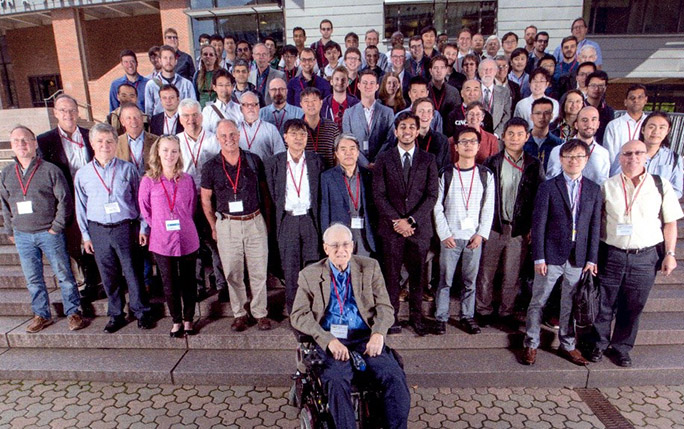Results from the Cold Cathode Test Bench presented at the IVNC-IVESC 2019

AVA Fellow Bruno Galante (CERN), attended the first joint meeting IVNC-IVESC 2019 between the International Vacuum Nanoelectronics Conference (IVNC) and the International Vacuum Electron Sources Conference (IVESC) in Cincinnati, Ohio, on July 22-26, 2019. The leading experts in the field of electron emission (namely field emission, thermionic emission and photoemission) gathered in Cincinnati to discuss and present the latest technologies and results regarding novel electron emission processes and applications.
Bruno presented the latest results obtained from the cold cathode test bench, which investigates cold electron emission sources. These studies aim to design and build a cold cathode electron gun with the goal to optimize and improve the electron cooler of ELENA (Extra Low Energy Antiproton facility) replacing the currently used thermionic electron gun.
The event was hosted by the University of Cincinnati, Ohio and lasted 5 full days rich of seminars, discussions and also a series of mini-courses covering theory and experiments. The whole conference was enriched by networking activities as a welcome drink, conference dinner and an excursion to the US Air Force museum. Moreover, the presence of experts from several sectors such as -universities, research centres and industry- assured to have a wide spectrum of the most advanced experimental setups and novel materials for the generation of electron beams.
On the fourth day, Bruno showcased the highlights of his AVA project and his latest results in an oral presentation entitled “Generation of cold electron for an eV electron cooler”. It was very encouraging to see that the use of carbon nanotubes as electron emitters is attracting lot of attention worldwide thanks to their very promising properties. Bruno’s results help to broaden even further our knowledge about this novel material and its performances, especially for what concerns stability issues and long-term measurements. The design of a carbon nanotube cold cathode electron gun is very beneficial due to the possibility to even further optimize the electron cooling performances at low energies.